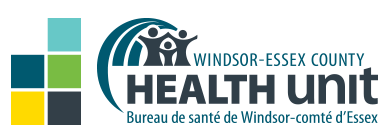BACKGROUND
Radon is an invisible, odorless, and tasteless radioactive gas that results from the natural decay of uranium in soil and rock. It can enter homes and buildings through cracks or openings in the foundation, and when the gas accumulates in enclosed spaces, it becomes a health risk. As radon decays, it releases radioactive particles that can damage the cells lining the lungs when inhaled. Prolonged exposure to radon can increase the risk of lung cancer. For non-smokers, radon exposure is the primary cause of lung cancer and for people who smoke, the risk is even higher. In fact, the Government of Canada (2025) estimates that radon exposure is responsible for 16% of lung cancers in Canada, resulting in more than 3,000 deaths each year1. Exposure to radon poses significant health risks, especially to vulnerable populations like children, seniors, and individuals with pre-existing lung conditions. Children are particularly susceptible, as early exposure increases their lifetime risk of lung cancer.
Health Canada has established the Canadian guideline for indoor radon levels in the home at 200 Becquerels per cubic meter (Bq/m³). A recent 2024 Cross-Canada Survey of Radon Exposure in the Residential Buildings of Urban and Rural Communities found that Ontario and Quebec have approximately 1 in 6 residential homes with an average radon level at or exceeding 200 Bq/m³. The only way to determine the radon level in a house or building is to test for it. Corrective actions should be taken within one year if radon level results are at or greater than 200 Bq/m³. Effective techniques to reduce indoor radon levels include sealing cracks or gaps in the house or building foundation, sealing sump pump holes, and increasing ventilation. However, if these techniques do not reduce radon levels below 200 Bq/m3, a more extensive radon mitigation system must be installed by a certified radon professional. According to Health Canada, the cost of radon mitigation typically ranges from $2000 to $4000, which can present a significant financial burden for low-income households.
In February 2019, the WECHU Board of Health passed a resolution outlining several progressive public health initiatives aimed at reducing community risks and exposures related to radon. The key actions included promoting municipal and public policy updates on testing and mitigation, along with strengthening provincial building code requirements for new constructions of homes. Since this resolution, WEC municipalities have adopted a radon rough-in requirement for all new residential construction through by-laws (2020). The Ontario Building Code further strengthened these measures by mandating a rough-in for a subfloor depressurization system in all new homes and buildings in January 2025.
The WECHU continues to promote radon awareness through educational campaigns to the community, every November during Radon Action Month, to encourage residents to test their homes.
In 2022, the WECHU provided consultation to the Essex County Library, and its branches, to implement a Radon Monitor Lending Program that offers Essex County residents the opportunity for short term borrowing of radon devices to test their homes. The program was initially funded by a grant and launched with 20 short-term radon testing devices for library cardholders. The program has continued and expanded to 54 devices. From 2022 to 2024, the devices were circulated 4,094 times. While the Essex County Library has successfully added this resource to their services, other community-serving organizations throughout the community hold important opportunities to offer similar types of free access to testing devices for the public. Free access to testing is of particular benefit to low-income households in high priority neighbourhoods. A more comprehensive, community based, barrier free access approach could expand reach and access.
Municipalities are in a unique position to take a leadership role in helping communities address radon concerns by developing and implementing radon policy frameworks. Many WEC residents live and work in spaces that lack modern radon mitigation systems, and the high cost of remediation is a major barrier for residents in low-income households. By implementing testing and mitigation policies in public spaces, municipal housing, and subsidized living facilities, municipalities can not only reduce exposure but also encourage other local organizations and businesses to adopt their own comprehensive radon policies.
PROPOSED MOTION
Whereas, the 2025 Government of Canada data shows that long-term radon exposure is the leading cause of lung cancer after smoking, and can be attributed to 3000 lung cancer deaths per year in Canada; and
Whereas, the 2024 Cross Canada Study indicates that the central region (Ontario and Quebec) of Canada has approximately 1 in 6 residential homes with average radon levels at or exceeding 200 Bq/m³, and
Whereas, testing is the only accurate way to know a home or building’s radon level, and
Whereas, radon mitigation can present a significant financial challenge for many low-income homeowners in the WEC region, and
Now therefore be it resolved that the Windsor-Essex County Board of Health recommends local municipalities adopt radon policy frameworks that include radon testing in municipally owned indoor spaces, including municipally supported congregate living sites, and implement mitigation strategies when high radon levels are detected; and
FURTHER THAT, the Windsor-Essex County Board of Health recommend that local municipalities adopt a free and accessible short-term radon monitoring device lending program, in a variety of public spaces, for residents to test their homes for radon barrier free; and
FURTHER THAT, the Windsor-Essex County Board of Health continues to recommend that local municipalities explore opportunities for subsidy programs, specifically for those living in high priority neighbourhoods and low-income households, to reduce the cost of radon remediation in homes where radon is detected.

